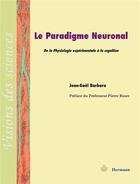-
Date de parution : 23/06/2006
-
Editeur :
Elsevier
-
EAN : 9782756201160
-
Série :
(-)
-
Support :
Revue
Résumé:
Introduction. The power of torpedo fish as a pathological model to the understanding of nervous transmission in Antiquity. Luigi Galvani's path to animal electricity. Vincenzo Malacarne (1744-1816) : a researcher in neurophysiology between anatomophysiology and electrical physiology of the human... Voir plus
Introduction. The power of torpedo fish as a pathological model to the understanding of nervous transmission in Antiquity. Luigi Galvani's path to animal electricity. Vincenzo Malacarne (1744-1816) : a researcher in neurophysiology between anatomophysiology and electrical physiology of the human brain. Time, from psychology to neurophysiology. A historical view. Emil du Bois-Reymond vs Ludimar Hermann. Science and craftsmanship : The art of experiment and instrument making. The origin of voluntary action, history of a physiological concept. Charles Edouard Brown-Sequard. An eventful life and a significant contribution to the study of the nervous system. Visual persistence and cinema. Behaviourism and the mechanization of the mind. Slowly forgetting the Pavlovian adventure?. Constantin von Monakow (1853-1930). A pioneer in interdisciplinary brain research and a humanist. Henry Dale and the discovery of acetylcholine. Some historical difficulties of the cholinergic transmission. The physiological construction of the neurone concept (1891-1952). Between local cultures and national styles : Units of analysis in the history of electroencephalography. The neurobiology of aggressive behaviour.
Donner votre avis









